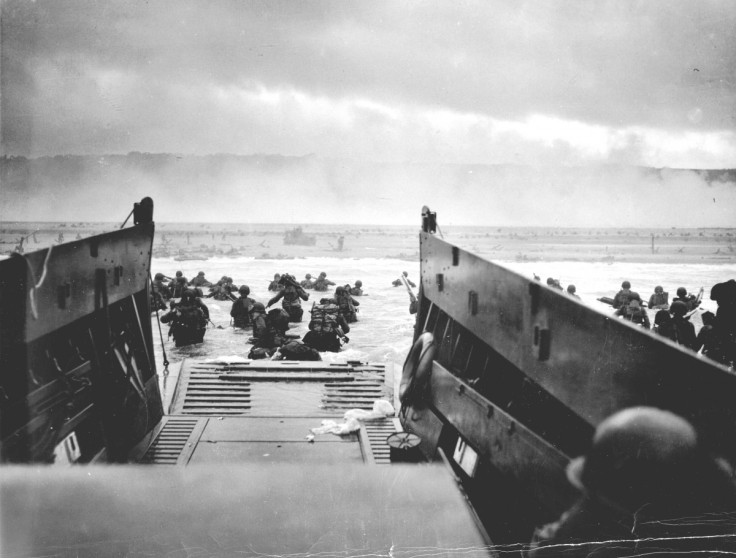D-Day 70th Anniversary: How Floating Tanks and Crashing Planes Won WWII

The Normandy landings on 6 June 1944 marked a major turning point in World War II after Allied forces unleashed the largest seaborne invasion in history.
However, it wasn't just a fleet of ships that helped the Allied forces take back German-occupied western Europe on what became known to the world as D-Day. It was also the success of the airborne assault and the on-land armoured vehicles that helped troops get into action.
So, to mark the 70<sup>th anniversary of the D-Day landings, IBTimes UK decided to take a look at the vehicular innovations that helped Allied forces to turn the tide and push the Nazis back.
Neptune's Wrath

After an entire year of planning, the D-Day landings, codenamed Operation Neptune, saw 156,000 Allied troops descend on the beaches of Normandy, conveyed in 6,000 ships and landing craft.
The invasion was a triumph for innovation, with a profusion of novel technologies involved. For example Dwight Eisenhower, Supreme Commander of the Allied forces at the time of D-Day, said the war would not have been won without the thousands of Higgins boats, which were designed to skim on the surface of the water - and which allowed thousands of troops to hit the beaches.
The creation of the amphibious tank also proved to be a major asset towards the success of the invasion. The tank, which was also dubbed DD because of the vehicle's duplex drive engine, was able to float thanks to an air-filled frame of rubber tubes, and used twin propellers to move in the sea.
The DD innovation made it possible for large numbers of tanks to be conveyed from landing craft under enemy fire, and thus gave the Allies a crucial advantage in their quest to penetrate the heavily fortified German beaches.

Airborne Assault
D-Day also marked the successful deployment of Douglas Dakota DC-3 planes which helped the Allies assault the enemy from the air.
The DC-3 Dakota plane, first flown in 1935, became one of the most significant forms of transport aircraft ever made .
During WWII, it helped in parachute dropping and was "renowned for its ruggedness and reliability," say curators at the Yorkshire Air Museum.
Furthermore, D-Day marked the biggest-ever military deployment of gliders, which were used during the landings.
Gliders were primarily intended to obviate the Germans' attempts to counter airborne landings, after the Nazis started sticking stakes in fields to stop planes from landing.
So the planes were designed to be collapsible; while the wings were designed to be easily broken off, the tail section could be immediately blown, which therefore allowed troops to disembark quickly.
On Land

Once the troops made it to land, they had to deal with myriad threats: the incessant fire of German machine-guns, the mines which were undetectable to the human eye, and the sand itself, which could easily become a bog which would make the transit of large numbers of people extremely difficult.
To deal with the mines, Allied inventors came up with the flail tank, which had a drum with weighted chains attached. The drum drove a rotating chain of balls into the ground in front of the tank, blowing up mines up to nine inches deep and clearing a path for troops following behind.
Meanwhile, one of the most simple yet highly effective forms of machinery to help troops and transport was the Bobbin. The Bobbin effectively laid out carpets (reinforced matting) that allowed armoured vehicles or heavy guns to move deftly over beach sand or loose shingles.
© Copyright IBTimes 2025. All rights reserved.






















